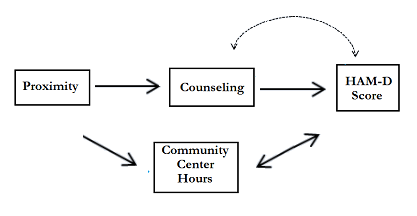You’ll come across dozens of different calculus variables, drawn from a wide variety of fields like physics, analytical geometry, statistics, and engineering. In addition, you have the general fields of single variable calculus, which deals with functions of one variable like t, and multivariate calculus which deals with more than one variable at a time.
Algebra vs. Calculus Variables
When you first came across a “variable” in algebra, it meant an unknown value and was usually denoted as x. You’ll still use the variable x in calculus, along with s, t, v and a variety of other symbols and letters. Additionally, there are many types of calculus variables. They are usually context specific (like speed of a car or height of a ball) and usually still unknown (until you define them). This becomes very important when choosing what kind of analysis you can do with your variables, and what errors might creep into analysis from variables you didn’t expect to have an effect.
Calculus Variables A to Z
- Binary variables (or dichotomous variables): variables with two possible values like yes/no, black/white, or 0/1. When variables have more than two possible values, they are called polychotomous.

Red pill or blue pill? - Bivariate: analysis with two variables (“bi” means “two”).
- Categorical variable (also called nominal variables or qualitative variables): any variable placed into a category. For example, “planets” is a category that might include the variables Mars and Venus. the category of “hair color” might contain black, blonde, and brown.
- Collider Variable: a variable represented by a node on a causal graph. The variable has paths pointing in and out.

Community Center Hours is a collider variable; the arrows entering create a loop. - Complex Variable: a variable that is part real number (i.e., one found on the number line) and part imaginary number i.
- Continuous variable: this type of variable is uncountable (which basically means if you start counting, you’ll never stop), and infinite. For example, time, which is on a continuum, (e.g., t = 10 years, t = 1099 years) is a continuous variable. Sometimes these are called Interval variables, but that can be confusing because the term “interval variable” usually indicates that there is a meaningful measurement between two variables (for example, GRE scores or IQ). Ratio variables are interval variables with a meaningful zero. For example, weight in pounds, sales in dollars or distance traveled.
- Control variable: a variable held constant in an experiment. For example, if you wanted to know if walking contributed to weight loss, you would control for calories eaten, age and many other factors.
- Covariate variable: like an independent variable, it has an effect on the dependent variable. However, it isn’t usually the focus of your study.
- Dependent variable (sometimes called a test variable): an outcome of an experiment, usually denoted by “y” in an equation (e.g. in the linear equation y = mx + b, “y” is the dependent variable). As the independent variable (x) changes, it affects the dependent variable. When dependent variables are used in non-experimental conditions, they are called criterion variables. In science fairs, they can be called responding variables. In non-experimental studies, they can be called outcome variables.
- Discrete variable: a variable that can be counted, and only has a finite number of values. For example, “children in classroom 23” is discrete because a classroom can only hold a certain number of children.
- Dummy Variables (also called indicator variables): found in regression, for connecting categorical variables. For example, if your categorical variables are “eye color” and “wears contacts” you might assign a 1 to mean “has blue eyes” and 0 to mean “does not wear contacts.”
- Endogenous variable: These variables are used almost exclusively in econometrics. They are like dependent variables in that they are affected by other variables in a system.
- Extraneous variables: Extra variables that you aren’t interested in studying. Nuisance variables are similar, except that they cause the data to have more spread (variance).
- A grouping variable (coding variable, group variable, or by variable) sorts data within computer data files into categories or groups. Usually, the names for groups can be anything that makes sense to you. For example, you might name categorical variables Tests A B C or Day 1 2 3.
- Identifier Variables: a variable used to uniquely identify a situation or individual. For example, social security numbers uniquely identify individuals in the social security system.
- Independent variable (sometimes called a treatment variable or manipulated variable): one that isn’t affected by the researcher or experimental condition. Usually denoted by “x” and plotted on the x-axis in a Cartesian plane. In regression analysis and non-experimental studies, they are called predictor variables. When a variable isn’t independent for sure, it’s called an explanatory variable.
- Indeterminate: a symbol that is treated as a variable. Often used as a placeholder in polynomials, formal power series, and other objects. In basic calculus classes, you won’t see these particular calculus variables very often.
- Intervening variable: explains the relationship between variables. These are hypothetical and cannot be observed directly through experimentation. For example, you might run an experiment to see if low socioeconomic status leads to lower life expectancy. Being poor doesn’t necessarily mean you’ll die early, so you hypothesize other intervening variables come into play: access to healthcare, inadequate housing etc.).
- Lurking variable: a hidden variable that affects the relationship between the independent and dependent variables.
- Manifest variable: a variable that can be directly observed or measured. For example, “height” can be observed and measured, but “feelings about height” cannot (“feelings” is an example of a latent variable, which cannot be measured directly).
- measurement variable (also called a scale variable): an amount or number of an item or thing. For example, “23 pounds of flour” is a measurement variable, as is “99 bottles of beer on the wall”.
- Mediating variable (or intervening variable): variables that explain how the relationship between variables happens. For example, it could explain the difference between a predictor variable and criterion variable.
- Moderating variable: changes the strength of an effect between the independent and dependent variables. For example, meditation may reduce stress level for seniors more than teenagers, so age is a moderating variable that moderates the effect between meditation and stress level.
- Monomial: an algebraic expression consisting of one term, like a single variable x.
- Observed Variable: Observed variables are variables that you, the researcher, record. For example, if you are running an experiment to record the heights of bean shoots, your observed variables would be “heights of bean shoots.” Observed variables are also used in Simultaneous Equations Modeling (SEM) to describe data that has been measured and recorded. These are technically outside the scope of calculus variables, but if you are analyzing experimental data, they are extremely important to define.
- Ordinal variable: Categorical-style variables with a clear order, like cool, warm, hot. When every ordinal variable in a set can be placed in order (e.g., 1st, 2nd, 3rd), they are called ranked variables.
- Qualitative variable: variables that can’t be counted or subjects to quantitative techniques (e.g. addition and subtraction). For example, the ordinal variables “warm, hot, and hotter” cannot be added or subtracted, so they are qualitative.
- Quantitative variable: Variables that can be counted, quantified, and subjected to numerical techniques. For example, {1, 3, 5} or {10 lbs., 20 lbs., 90 lbs.}.
- Random variables arise from random processes. They give numerical values to outcomes of random events. Convergence of random variables is where a set of numbers settle on a particular number.
- Real Variable: any number that can be found on the real line; more formally, these calculus variables are found in the set of reals ℝ.
- Separation of Variables is a method to solve differential equations. All terms containing one variable appear on one side of the equation, while all terms containing the other variable appear on the opposite side.
References
Red Pill blue pill image: W.carter,